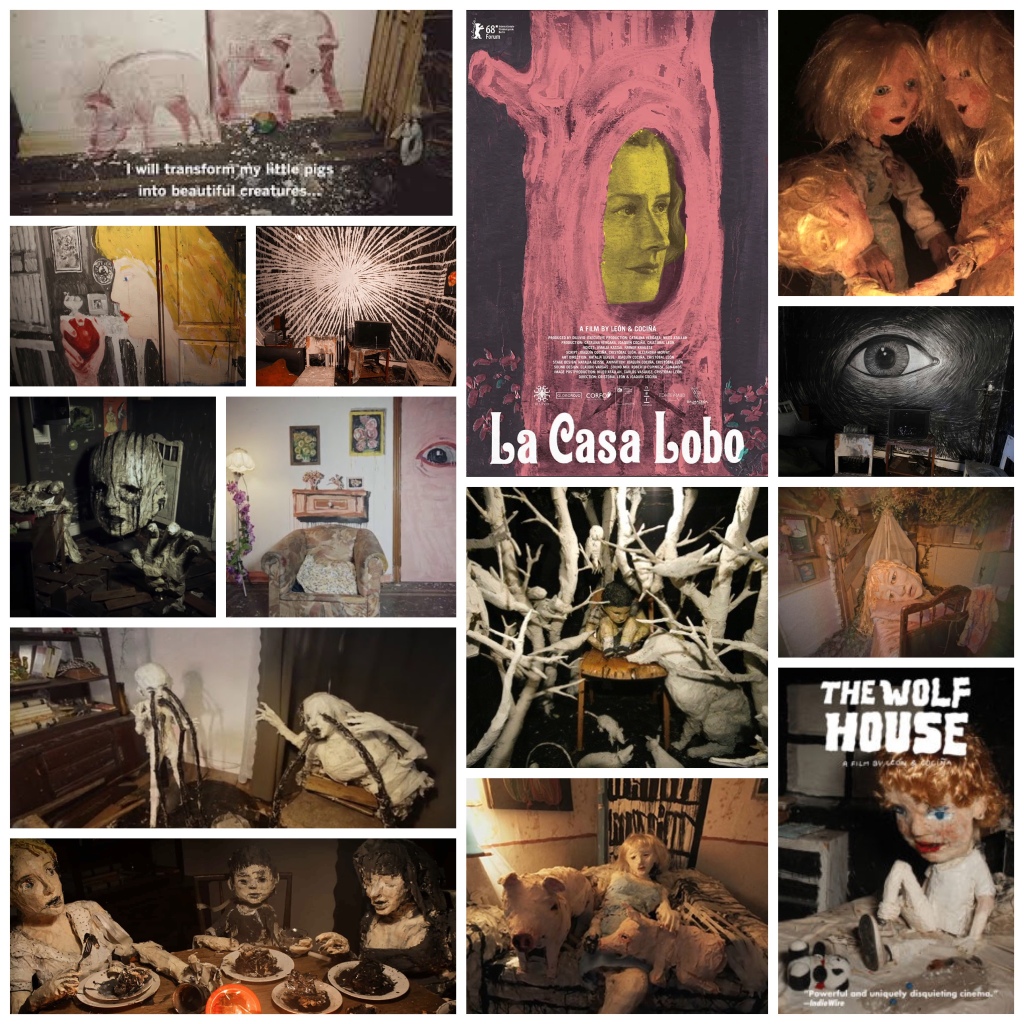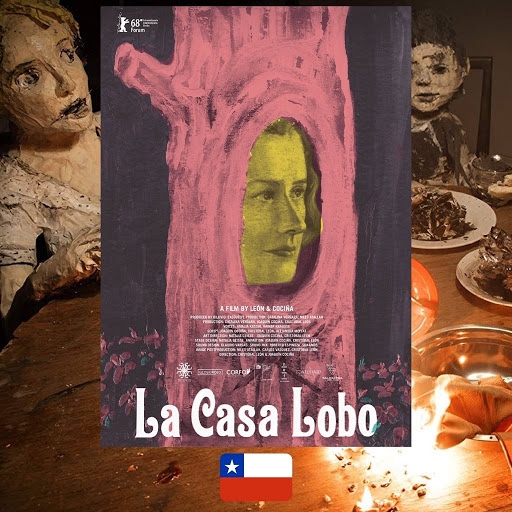
There are many ways to symbolically impart real world events in film, and sometimes when the events are particularly grim it helps to bathe your message in a healthy dose of artistic abstraction, as not to overwhelm your audience in grisly details or bring the mood down with a stifling sense of literacy. Joaquín Cociña/Cristóbal León’s The Wolf House is based upon (in spirit) the true life tale of a horrible former Nazi who started a nightmarish, controlling doomsday cult who abused hundreds of children in the Chilean mountains sometime after WWII. After one young girl is punished for allowing pigs to escape, she runs away from the commune herself and it’s this basic framework that allows a terminally surreal stop-motion Dreamscape to play across the screen. There is no actual story to the events onscreen and one would have to either read up on the film or come across a review like this to even fully grasp the theme and backstory. There’s a quick and deliberately ominous infomercial for the commune right at the start of the film but even that is untethered of context and quickly segues into a consistently unearthly theatre of the bizarre. This isn’t succinct, structured stop motion animation in the way someone like Tim Burton would create, this is something so wild, so artistically expressive I can almost not even put it into words, but my review is accompanied by a PhotoGrid mood-board as always, so feast your eyes. The tactility and sculpted bazaar of mâché, clay and many other materials creates a swirling, never placid, always metamorphosing subconscious ballet of scintillating, melting, dissolving image and sound that is truly, singularly unlike any other medium I’ve ever seen. The film reportedly took five years to make, and honestly I would have guessed double that with how complex and elemental the design is. One has to watch it at least that many times to fully absorb everything on display as we see figurines constantly disintegrating mid-scene, transforming into inanimate objects, suddenly becoming ectoplasmic vapour that creeps across the walls of the detailed dioramas they inhabit in forms of movement that are anything but of this world. Because of how non-traditional the experience is, the viewer must use mood sensors and subconscious intuition to intake the film’s essence, and abandon all hope of a clearly discernible plot. A scene where the animated figurine of three German children sing a haunting lullaby together was the emotional core and the closest the filmmakers get to outright exposition, it’s a heartbreaking image when contrasted against the Wikipedia knowledge about the cult in real life, which was a horrible and senseless event that could have been avoided. This is an art installation come to life, not a narrative story, and inside the circus of paint, colour and dynamism we can sense the undertones of menace and tragedy if we’re tuned into the film’s far out frequency. Highly recommended for creative types who enjoy films that not only function outside the box of what’s considered normal and palatable, but barely seem like they’re from this dimension at all. A wonderful experience, streaming on Shudder for anyone interested.
-Nate Hill
